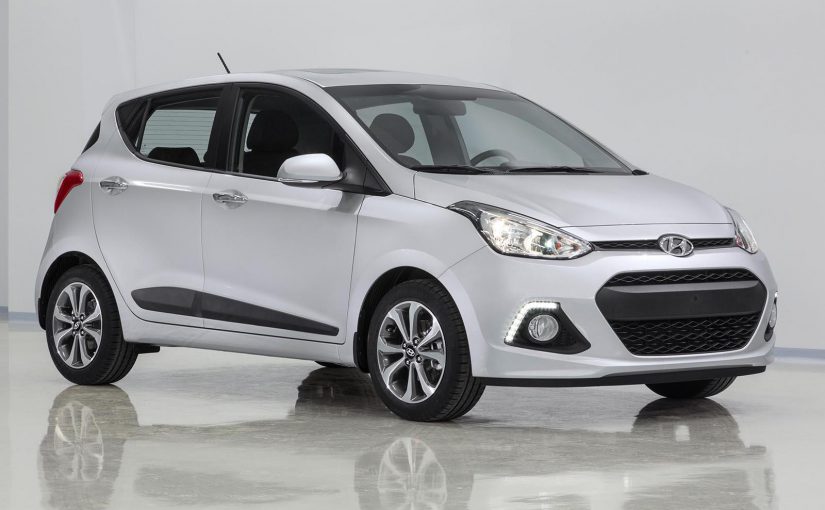Different Market, Same Story: Subprime Auto Loan Defaults On The Rise
Stop me if you`ve heard this one before.
Subprime auto lending has soared since the U.S. mortgage bubble burst back in 2008, and, predictably, default rates have commenced to go after suit. This week, 90-day auto loan delinquency rates eclipsed Trio.8 percent, their highest levels since the financial crisis, putting auto loan investors and shareholders of subprime auto lenders at risk.
With interest rates still at historical lows, auto debt investors have been lured by the promise of yields as high as five percent. However, if too many of these loans sour, investors can be left footing the bill.
Accusations Of Lender Manhandle
Some troubling anecdotal evidence of lender manhandle has begun popping up regularly as well. Earlier this year, Santander Consumer USA Holdings Inc (NYSE: SC) paid $26 million to lodge cases against the company related to abusive lending practices in Delaware and Massachusetts. As part of the settlement agreement, Santander admitted no wrongdoing.
In late May, Moody`s Investor Service reported that Santander verified the income of only about eight percent of its auto borrowers.
«A lack of income verification … creates more uncertainty around whether borrowers will be able to afford their monthly payments,» the ratings rock hard said, according to CNN.
In an email to Benzinga, Santander defended its lending process.
«We are entirely committed to treating our customers fairly and lending responsibly,” the statement said, adding that other variables such as down payments and credit history are considered in lending decisions.
Beyond Santander
Santander`s practices aren`t the only ones raising eyebrows. In May, analytics stiff Point Predictive reported that as many as one percent of U.S. auto loan applications contain some form of fraud. That level of fraud is harshly in-line with fraud levels seen during the peak of the U.S. mortgage bubble.
The collapse of the mortgage market almost took down the entire U.S. economy in 2008. Fortunately, the auto loan market has nowhere near the size and breadth of the mortgage market. UBS credit strategist Stephen Caprio recently assured investors that auto finance «is not going to bring down the financial system like the mortgage crisis almost did.»
Where’s The Pressure Coming From?
However, with U.S. auto sales and auto prices on the decline in 2017, lenders are feeling even more pressure to hit their loan targets. According to Height Securities analyst Edwin Groshans, it’s subprime lenders like Santander that are most exposed to the potential fallout.
«The combination of lower used car auction prices and weakening credit quality will manifest in the operations of auto finance companies with subprime lending concentrations,» Groshans recently wrote.
In addition to Santander, Height named Credit Acceptance Corp. (NASDAQ: CACC), Ally Financial Inc (NYSE: ALLY) and Capital One Financial Corp. (NYSE: COF) as the companies with the most exposure to the subprime auto market.
Different Market, Same Story: Subprime Auto Loan Defaults On The Rise, Benzinga
Different Market, Same Story: Subprime Auto Loan Defaults On The Rise
Stop me if you`ve heard this one before.
Subprime auto lending has soared since the U.S. mortgage bubble burst back in 2008, and, predictably, default rates have commenced to go after suit. This week, 90-day auto loan delinquency rates eclipsed Three.8 percent, their highest levels since the financial crisis, putting auto loan investors and shareholders of subprime auto lenders at risk.
With interest rates still at historical lows, auto debt investors have been lured by the promise of yields as high as five percent. However, if too many of these loans sour, investors can be left footing the bill.
Accusations Of Lender Manhandle
Some troubling anecdotal evidence of lender manhandle has begun popping up regularly as well. Earlier this year, Santander Consumer USA Holdings Inc (NYSE: SC) paid $26 million to lodge cases against the company related to abusive lending practices in Delaware and Massachusetts. As part of the settlement agreement, Santander admitted no wrongdoing.
In late May, Moody`s Investor Service reported that Santander verified the income of only about eight percent of its auto borrowers.
«A lack of income verification … creates more uncertainty around whether borrowers will be able to afford their monthly payments,» the ratings hard said, according to CNN.
In an email to Benzinga, Santander defended its lending process.
«We are entirely committed to treating our customers fairly and lending responsibly,” the statement said, adding that other variables such as down payments and credit history are considered in lending decisions.
Beyond Santander
Santander`s practices aren`t the only ones raising eyebrows. In May, analytics rock-hard Point Predictive reported that as many as one percent of U.S. auto loan applications contain some form of fraud. That level of fraud is toughly in-line with fraud levels seen during the peak of the U.S. mortgage bubble.
The collapse of the mortgage market almost took down the entire U.S. economy in 2008. Fortunately, the auto loan market has nowhere near the size and breadth of the mortgage market. UBS credit strategist Stephen Caprio recently assured investors that auto finance «is not going to bring down the financial system like the mortgage crisis almost did.»
Where’s The Pressure Coming From?
However, with U.S. auto sales and auto prices on the decline in 2017, lenders are feeling even more pressure to hit their loan targets. According to Height Securities analyst Edwin Groshans, it’s subprime lenders like Santander that are most exposed to the potential fallout.
«The combination of lower used car auction prices and weakening credit quality will manifest in the operations of auto finance companies with subprime lending concentrations,» Groshans recently wrote.
In addition to Santander, Height named Credit Acceptance Corp. (NASDAQ: CACC), Ally Financial Inc (NYSE: ALLY) and Capital One Financial Corp. (NYSE: COF) as the companies with the most exposure to the subprime auto market.

No comments